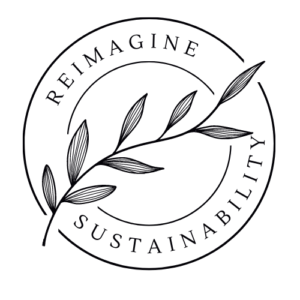Hello, my lovely readers! I’m Sona Ruby Chacko, and currently I’m pursuing my masters in sustainable development. I’m based in Bangalore, India, at the moment. One of my favorite areas in the field of sustainable development is the future of food sustainability. But even so, viewing technology as a key driver of food sustainability was quite foreign to me.
I used to believe that going back to traditional ways was the path to achieving this goal. Going back, however, doesn’t imply that one should ignore the enormous potential that technology has to offer.
How far have we come?
A study conducted by the Boston Consulting Group in 2020 among 300 corporate sustainability initiatives revealed that half of them reduced their negative environmental impact by focusing on innovations in three main areas, namely: products, processes, and value chains. Around 25% of them reimagined their entire business model by enhancing their digital capabilities to produce new solutions and break economic barriers.
As an illustration, BCG has successfully created CO2 AI, an AI-based solution that can manage, measure, report, and minimize the carbon footprint scale throughout a company’s whole supply chain. Such applications promote a “technology ecoadvantage mindset” that can develop and combine the latest technologies and rethink traditional approaches.

Now, redefining the traditional approaches to achieving food security can significantly alter the course of food sustainability. One such example is the practice of drip irrigation. The method of drip irrigation was developed to ensure that crops received a proper water supply as opposed to manual irrigation, a traditional method that is not precise enough in doing so. But using the regular drip irrigation system, you can only set a timer for when the crops should be irrigated. It does not take into account weather and climate factors, soil type, or moisture.
So using more advanced approaches like AI and analytics, the regular drip irrigation system has been modified into a smart irrigation system. Here, the plants are watered on a timely basis by factoring in weather conditions, soil type, and moisture levels and adjusting the water usage accordingly. In this way, water is utilized more effectively to avoid overuse or waste, making it a more sustainable option.
Artificial Intelligence and Food Security
Leveraging artificial intelligence in this field is a big step towards achieving food security. As per the targets of Goal 2—zero hunger—of the 17 sustainable development goals, integrating technology with food sustainability becomes a critical factor in achieving this goal. AI models operate through two types of machine learning called “supervised” and “unsupervised” to analyze various data sets provided to them and give the desired outcome.
In supervised learning, labeled data will be fed into the model instead of raw data. Like if you were training the computer by feeding it images labeled “cats,” the model would learn this information and then use it to identify or classify “cats” from unlabeled images. This approach is used for forecasting and predicting models.

In unsupervised learning, AI models are trained with raw, unlabeled data. The model then identifies patterns or trends in the data to get the desired outcome, much like how ChatGPT works.
The important difference between these two approaches is that, just like the name implies, supervised learning requires human oversight while unsupervised learning does not.
Given below are some of the AI applications that every food sustainability enthusiast needs to know about:
1. Gene Editing
CRISPR technology is used to alter the genetic makeup of a plant by incorporating the desired genes into its DNA. Now there are a lot of combinations that can create plants with different traits, like resistance to a specific strain of pests. With the help of AI, we can achieve more feasible and efficient gene alterations.
By giving these models access to different databases pertaining to gene editing, they can create a data network that shows how various concepts are related to one another, called a “semantic network.” This is created by tracking specific terms and vocabulary that are used to extract information from texts and images. This semantic network is then utilized to predict various combinations that can be attained by gene editing.
2. Mapping
With climate change on the rise, it is essential that cultivators get access to real-time data. AI models are data-driven, and they can be used to support the mapping of fields, growth, and yield. By factoring in environmental elements like weather conditions and pest populations, AI driven field mapping can predict the growth and yield of the plant without having to go through the whole cultivation process.
This can also help farmers make better decisions when it comes to land purchasing or leasing and also decide what needs to be cultivated for better productivity.
3. Precision Agriculture
This method makes use of GPS, drones, and satellite imagery to gather data and improve the use of traditional resources and crop quality. Precision agriculture allows the farmer to manage their field by dividing it into smaller sections, which helps make decisions according to the specific need. For example, the smart sprayer developed by Blue River Technology uses AI and a vision based system to identify the weeds from the other crops and spray only on the weeds.
This can significantly reduce herbicide usage as it is used in small amounts. Another variation of this model developed by Harvest CROO Robotics uses the same mechanism for detecting, locating, and harvesting ripe fruits only.
4. Smart Irrigation System
The smart irrigation system is yet another effective way to use water effectively while preventing waste. By using AI models, weather conditions, soil type, and moisture levels are factored in, and water is dispensed based on these conditions. It is achieved by using sensors that specifically detect these changes. The frequency and amount of watering are automated and adjusted based on environmental factors like the ones mentioned above.
This method increases irrigation efficiency while maintaining the plant’s health and quality. Both large scale and small scale cultivation can benefit from this technology.
5. Supply Chain Optimisation
Artificial intelligence can be used to track every phase of the supply chain. This creates more transparency in the process, from cultivation to consumption. AI models trained using supervised learning, as mentioned before, can improve supply chain planning by forecasting supply and demand. It is used for inventory management and improving logistics by tracking the path of products in the supply chain.
This helps with waste reduction as the amount of resources that are being used at each step and the rate of production of goods are tracked using the AI model.
The future of food sustainability
The main reason that attracted me to this topic is ChatGPT itself. By conversing with the AI model, I was able to see how the model trains itself to analyze and retain information to provide responses that are accurate, relevant, and well thought out (like a human being).
This made me curious enough to look up whether such models have been applied in the food sustainability area. There are untouched areas in this field that need further exploration. The first step is to conduct in depth market research to understand the problem areas that need to be addressed. Identifying them will aid in the creation of a proper framework for how they can be resolved.
This can open up the path for new and upgraded technology that can improve resource management and production while catering to demand and supply. But the challenge here is feasibility.
As always, newer technology is expensive, at least in its early stages of release to the public. While organizations that are well established and have sufficient revenue can easily afford these innovations, the bigger question is how often does the general public come across them or their benefits?
More importantly, is the common public taken into account when such technologies are introduced into the world? This is where the target audience becomes a key player. I believe that technology can be made more affordable if it is developed to cater to the needs of the general public rather than for profit. It would make the process a lot more inclusive.
Furthermore, it is also important to increase awareness of the topic to make it more accessible and increase global partnerships.
About our guest writer: Sona Ruby Chacko

My name is Sona Ruby Chacko. I’m pursuing my master’s in sustainable development at Christ University, Bangalore. Even though I have my bachelor’s in chemistry, I am a passionate sustainability enthusiast, and I’m actively trying to get involved in the field of sustainability careerwise.
Food sustainability, climate change, and zero waste are the three areas that I’m most interested in working on in this field. I love writing about these areas, especially about food sustainability, which I feel is an area that has a lot of scope.
I had my share of experience as an intern at Thanal, an environmental enthusiast organization, as their research intern. Here I conducted my research on how the COVID-19 pandemic has influenced food security levels in the southern parts of Kerala, India.
I have also started a personal blog called Edible Ideas where I share my thoughts on food sustainability, but I haven’t become a regular blogger yet. I think of all of these as little steps that will help me succeed in my career, and I hope to work as a consultant for the same in the future.
Connect with me on LinkedIn: Sona Ruby Chacko
Do you want to become a guest writer for Reimagine Sustainability?
If you’re passionate about sustainability and want to share your ideas with a wider audience, becoming a guest writer for Reimagine Sustainability is an excellent opportunity!
As a guest writer, you can bring your unique perspective to the table, sharing your insights and experiences with others who share your passion for sustainability. Whether you have expertise in a particular area, a creative approach to problem-solving, or a personal story to share, Reimagine Sustainability provides a platform to amplify your voice and inspire others.
Don’t miss out on the chance to contribute to a community of like-minded individuals dedicated to creating a better future for ourselves and our planet. Join us as a guest writer and make your mark on the world!
Contact us today! Use this contact form. 🙂



0 Comments